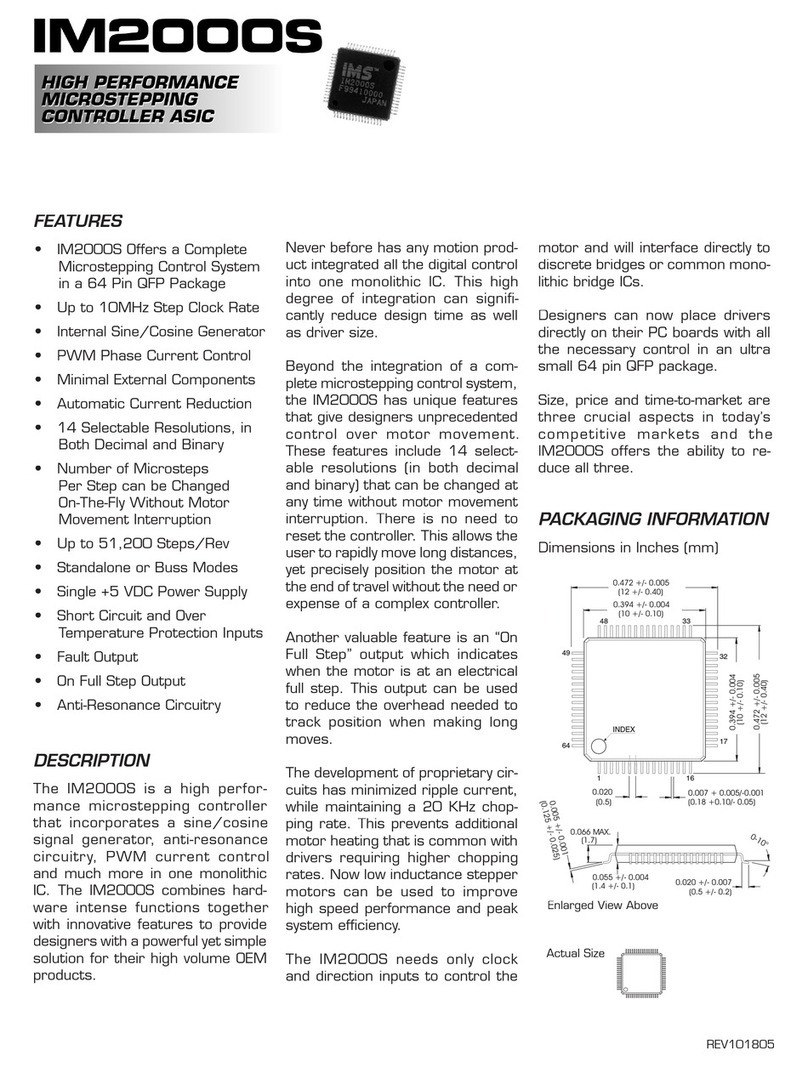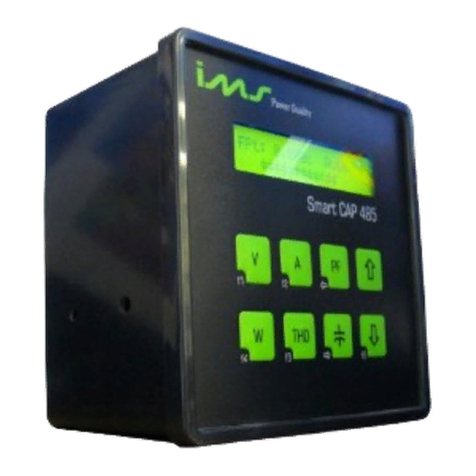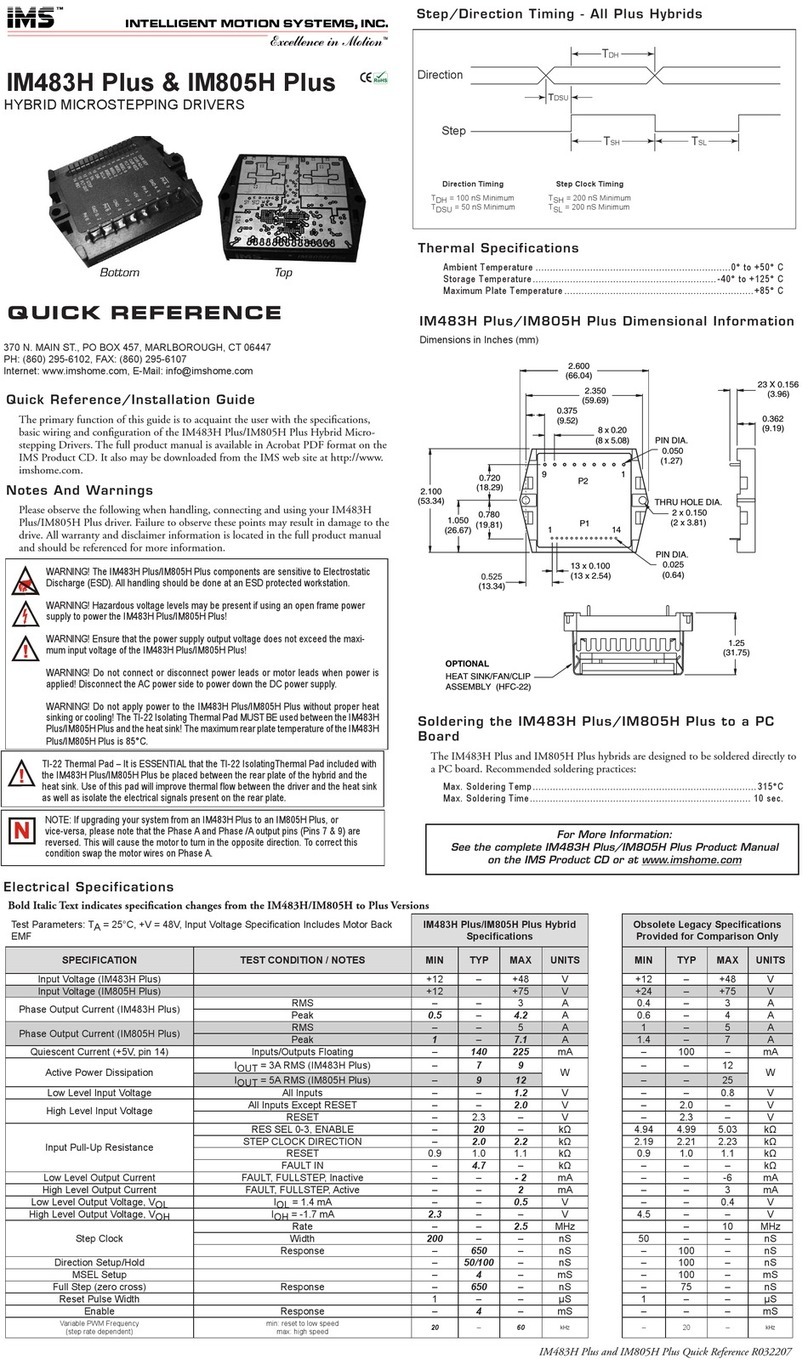1IM483 Operating Instructions Revision R032306
Table of Contents
Introduction............................................................................................... 5
The IM483 ..................................................................................................................... 5
Features and Benets ................................................................................................... 5
The Product Manual ...................................................................................................... 6
The Product Manual ...................................................................................................... 6
Notes and Warnings...................................................................................................... 7
Hardware Specications........................................................................... 8
Section Overview .......................................................................................................... 8
Mechanical Specications ............................................................................................. 8
Electrical Specications................................................................................................. 9
Thermal Specications ................................................................................................ 10
Pin Assignment and Description ................................................................................. 10
Mounting The IM483 .............................................................................. 13
Theory of Operation ............................................................................... 14
Section Overview ........................................................................................................ 14
Circuit Operation ......................................................................................................... 14
Microstep Select (MSEL) Inputs.................................................................................. 15
Stepping ...................................................................................................................... 15
Dual PWM Circuit ........................................................................................................ 16
Fullstep Output Signal ................................................................................................. 17
Timing.......................................................................................................................... 17
Power Supply Requirements.................................................................. 18
Section Overview ........................................................................................................ 18
Selecting a Power Supply ........................................................................................... 18
Selecting an Opto Supply............................................................................................ 20
Recommended Wiring................................................................................................. 21
AC Line Filtering.......................................................................................................... 22
Motor Requirements............................................................................... 23
Section Overview ........................................................................................................ 23
Selecting a Motor ........................................................................................................ 23
Motor Wiring ................................................................................................................ 28
Connecting the Motor .................................................................................................. 28
Interfacing and Controlling the IM483 .................................................... 32
Section Overview ........................................................................................................ 32
Layout and Interface Guidelines.................................................................................. 32
Motor Power Connection (+V)..................................................................................... 33
Conguring and Controlling the Output Current .......................................................... 34
Controlling the Output Resolution ............................................................................... 39
Interfacing and Using the Isolated Logic Inputs .......................................................... 41
Connecting and Using the Fault Output ...................................................................... 47
Full Step Output .......................................................................................................... 48
Minimum Connections................................................................................................. 49
Troubleshooting...................................................................................... 50
Section Overview ........................................................................................................ 50
Basic Troubleshooting................................................................................................. 50
Problem Symptoms and Possible Causes .................................................................. 50
Contacting Technical Support ..................................................................................... 53
The IMS Web Site ....................................................................................................... 53
Returning Your Product to IMS ................................................................................... 53






























